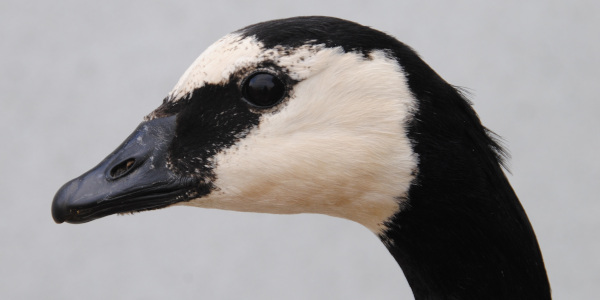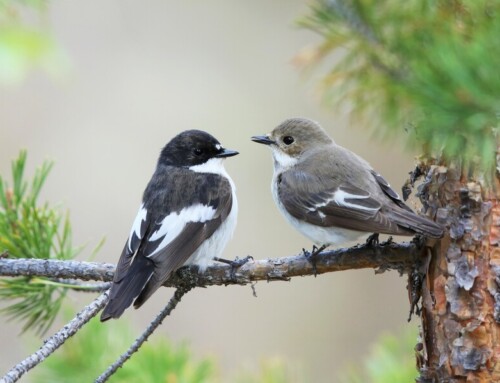LINKED PAPER
Moulting season corticosterone correlates with winter season body‐weight in an Arctic migrant bird. Doyle, S., Cabot, D., Furlong, J., Liu, Y., Colhoun, K., Walsh, A.J. and Mcmahon, B.J. 2020. IBIS. DOI: 10.1111/ibi.12876. VIEW
The Greenland Barnacle Goose, Branta leucopsis, is a long-distance migrant, breeding in the valleys of north-east Greenland and wintering along the north-east coasts of Ireland and Scotland. There has been an exponential increase in the abundance of Barnacle Geese in recent years due to protection from hunting, advantageous climate conditions and a wealth of novel winter food resources as grassland agriculture intensifies across Europe. Despite the positive trends in Barnacle Geese there are many biotic and abiotic challenges that individuals must face throughout the annual cycle. Stressors include competition with other geese, predation pressure (such as Arctic Fox, Vulpes lagopus, and Gyrfalcon, Falco rusticolus) or costs associated with nesting and raising offspring. In addition, the presence of metal and chemical contaminants in the environment (from mining and other industry) is known to interfere with the internal hormone system functioning of animals and may exacerbate stress responses. For example, Barnacle goslings exposed to trace metals at decommissioned coal-mining sites in Svalbard were found to erratically increase stress-hormone secretion during subsequent stress tests (Scheiber et al. 2018).
It is important to note that natural selection acts not on hormones themselves, but on their downstream effects on the body. In geese, body morphology is strongly associated with survival and reproduction. It is an advantage to be bigger, as it improves social status and access to resources. It is an advantage to be heavier, as more reserves are available for migration and nesting. Facial plumage is also an important social signal in Barnacle Goose society; although the role is not fully understood, it appears that individuals with darker faces are more attractive (Black et al. 2014). In light of this, a study was conducted at University College Dublin, Ireland, to test relationships between stress hormones and body size, body-weight and facial plumage in Barnacle Geese to determine links between stressful environments and key morphological traits.

The glucocorticoid hormone corticosterone (CORT) modulates homeostasis, energy balance and stress response in birds. Samples of feathers grown during the moult period (July/August in Greenland) were collected from Barnacle Geese during the winter period (October to April in Ireland). CORT was extracted from these samples following a methanol-based extraction technique based on Bortolotti et al. (2008). While the feather sample was being collected, measurements of body size, body-weight and plumage patterns were also collected. Relationships between CORT and body measurements were tested using standard and generalised linear statistical models.

The results revealed that individuals with higher CORT during body moult had a lower body-weight the following winter (Figure 1). This is one of few studies to demonstrate this relationship in a free-living population outside controlled laboratory conditions. It is widely accepted that chronically elevated CORT has negative consequences for birds, but the results suggest that, in Barnacle Geese, this effect could be associated with variation in body-weight. This is particularly interesting because body-weight fluctuates rapidly in response to environmental conditions and is closely linked to both survival and reproductive success in this species. Although it is not possible to confirm whether body-weight affects CORT or visa-versa from this study alone, understanding these relationships is useful in the current period of rapid global change and further research may unravel the links.
References
Black, J.M., Prop, J. & Larsson, K. 2014. The Barnacle Goose, 1st ed. T & AD Poyser, London.
Bortolotti, G.R., Marchant, T.A., Blas, J. & German, T. 2008. Corticosterone in feathers is a long-term, integrated measure of avian stress physiology. Funct. Ecol. 22: 494–500. VIEW
Scheiber, I.B.R., Weiß, B.M., de Jong, M.E., Braun, A., van den Brink, N.W., Loonen, M.J.J.E., Millesi, E. & Komdeur, J. 2018. Stress behaviour and physiology of developing Arctic barnacle goslings (Branta leucopsis) is affected by legacy trace contaminants. Proc. R. Soc. B Biol. Sci. 285: 20181866. VIEW
Image credit
Top right: Barnacle Goose, Branta leucopsis © Susan Doyle




